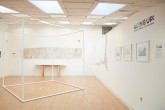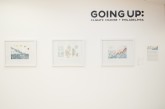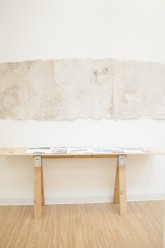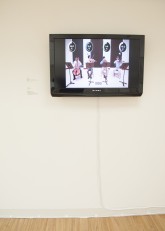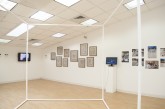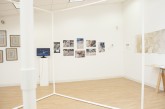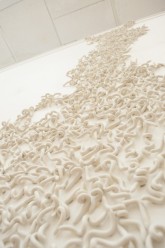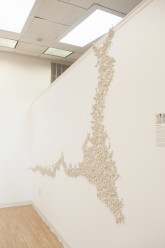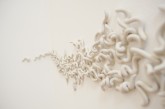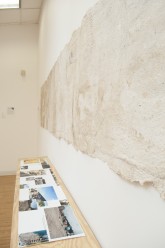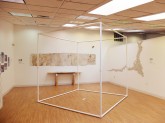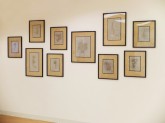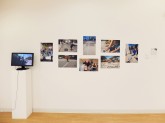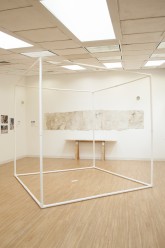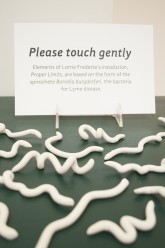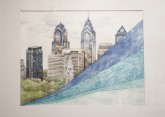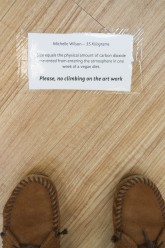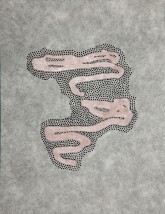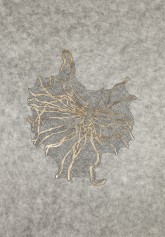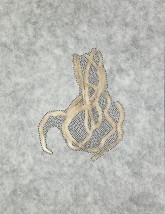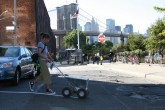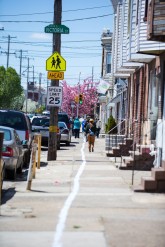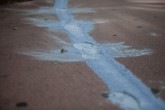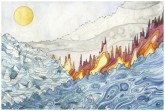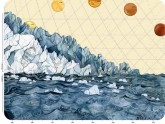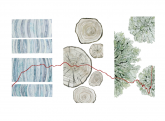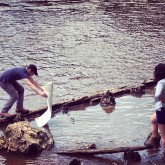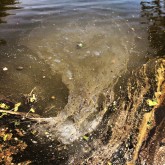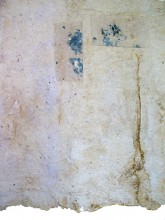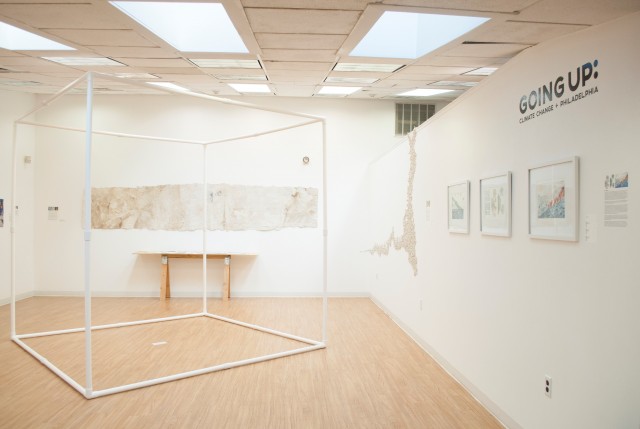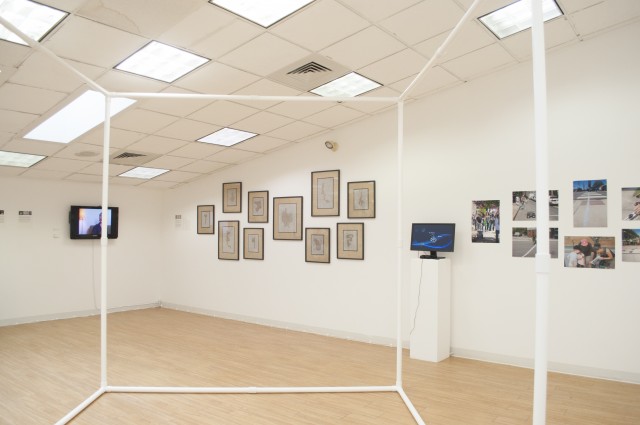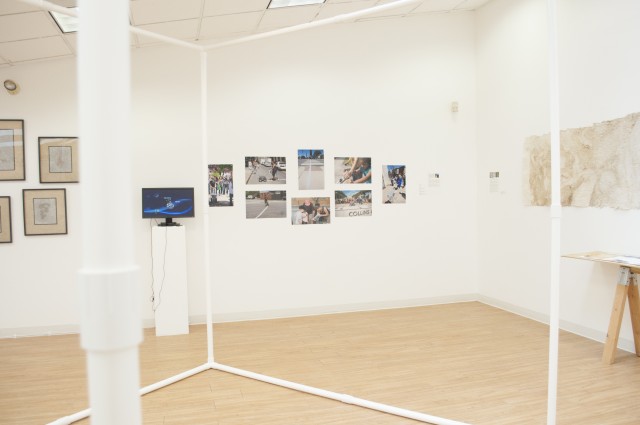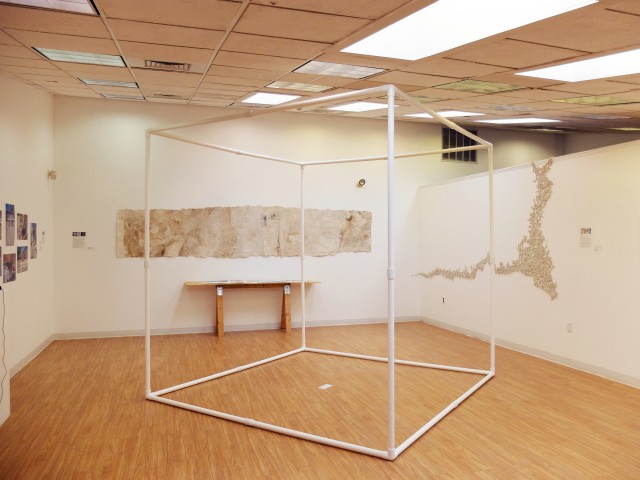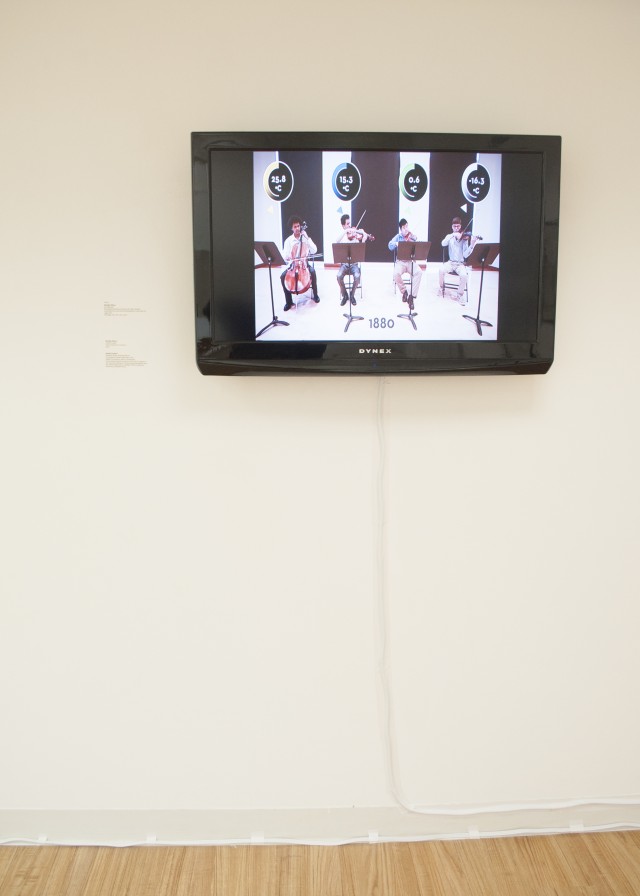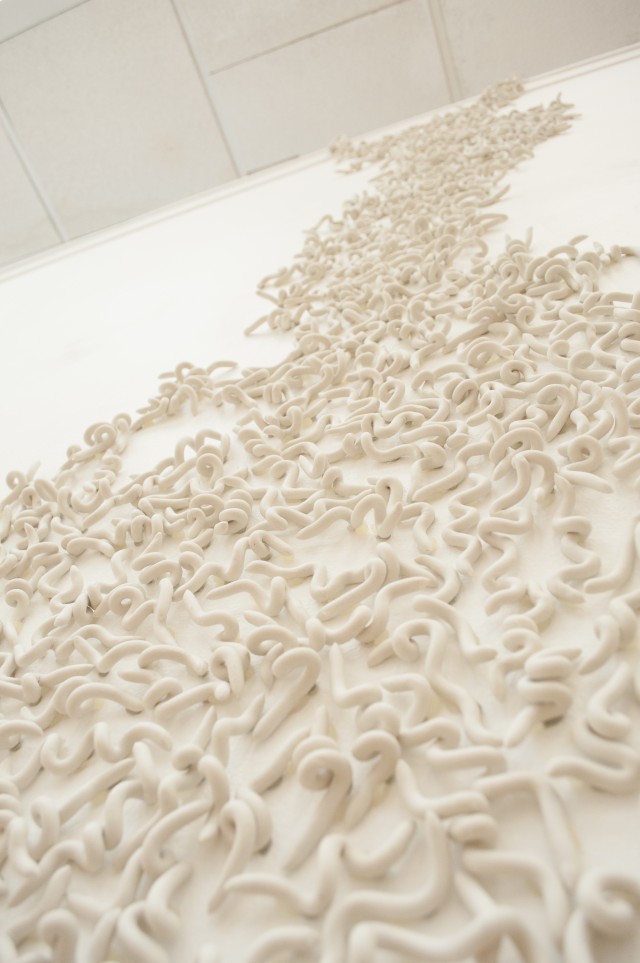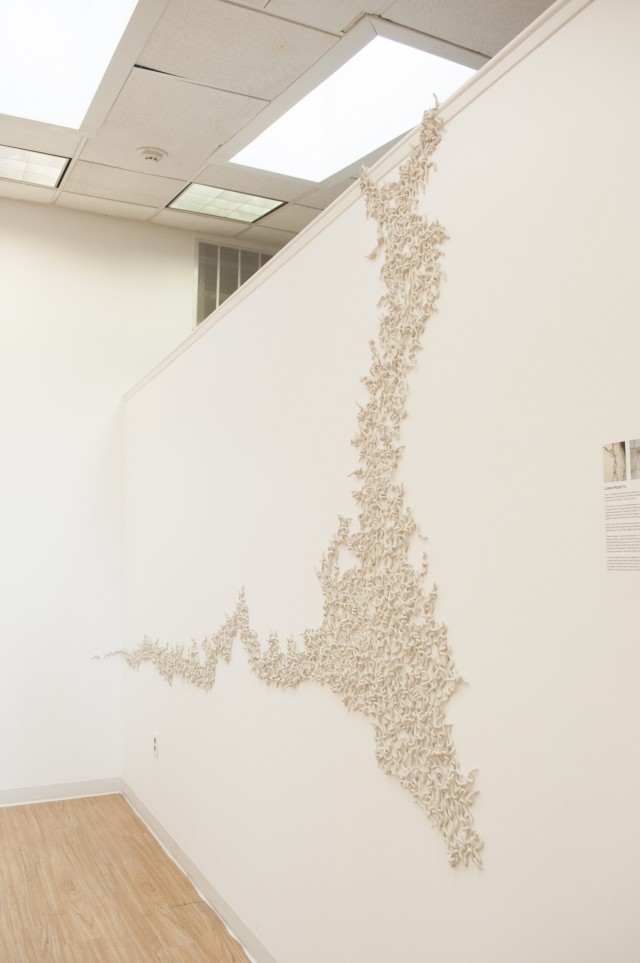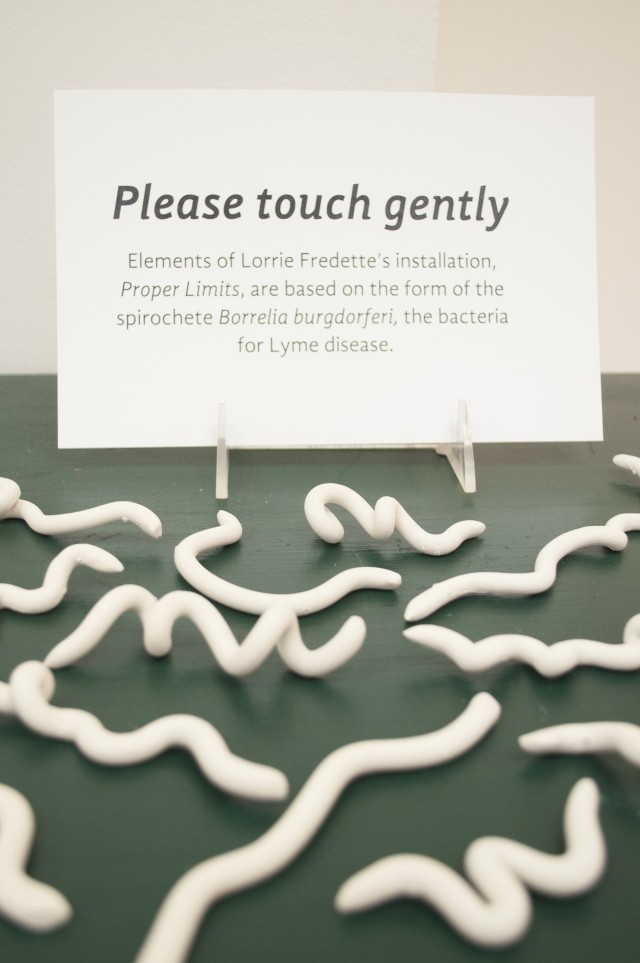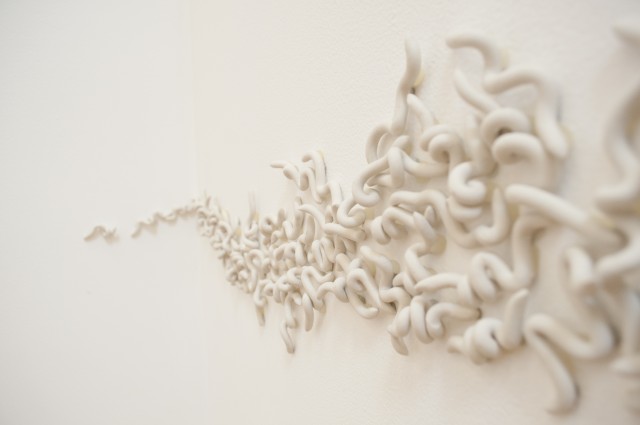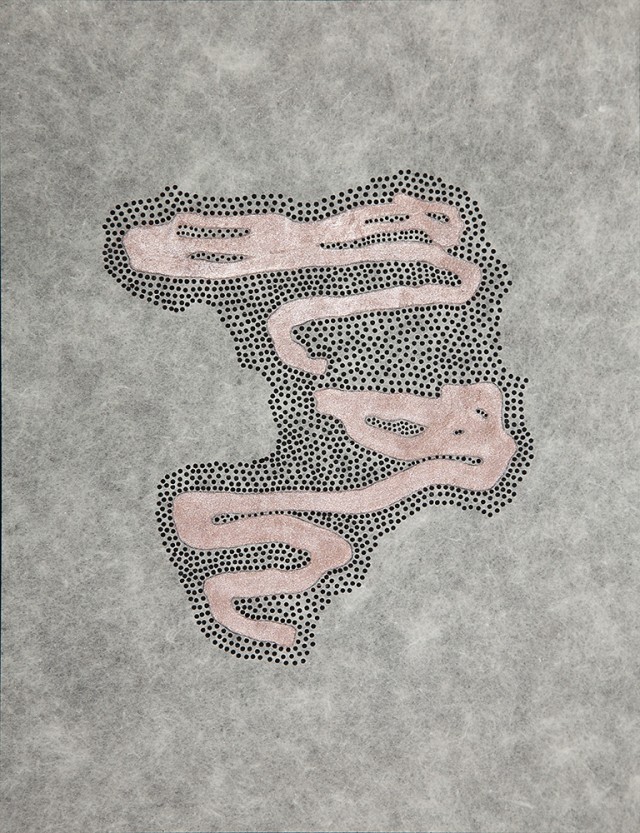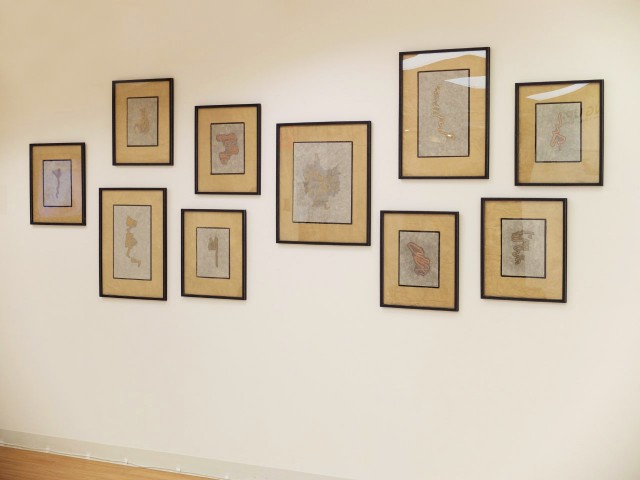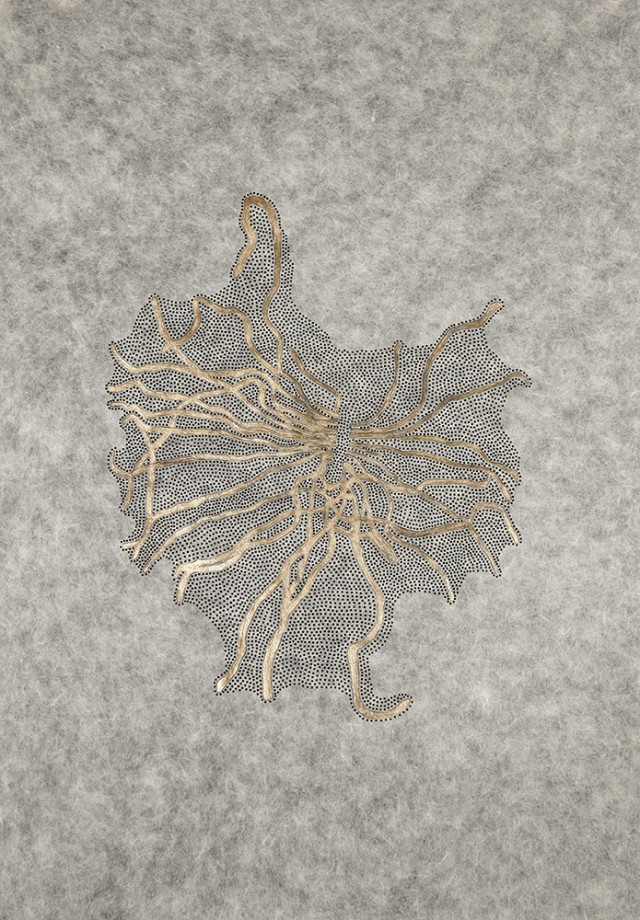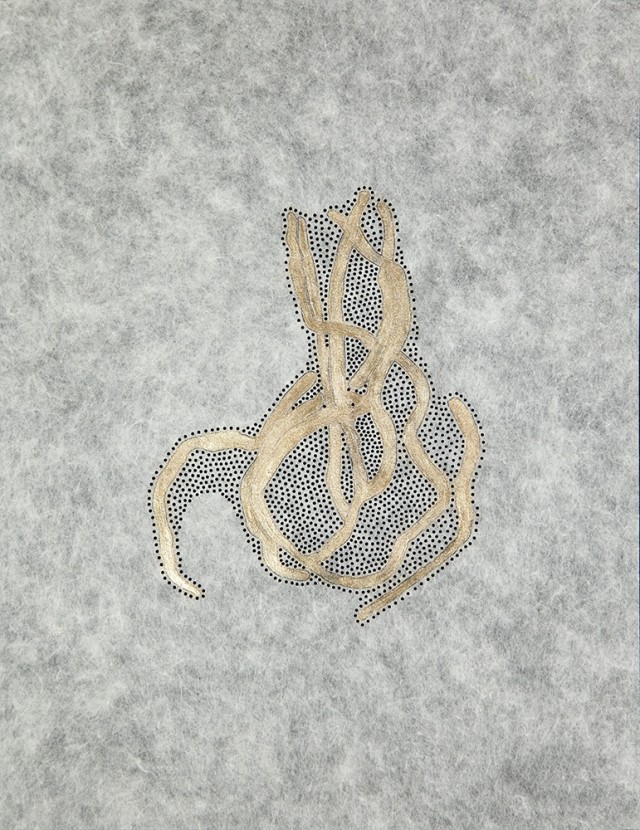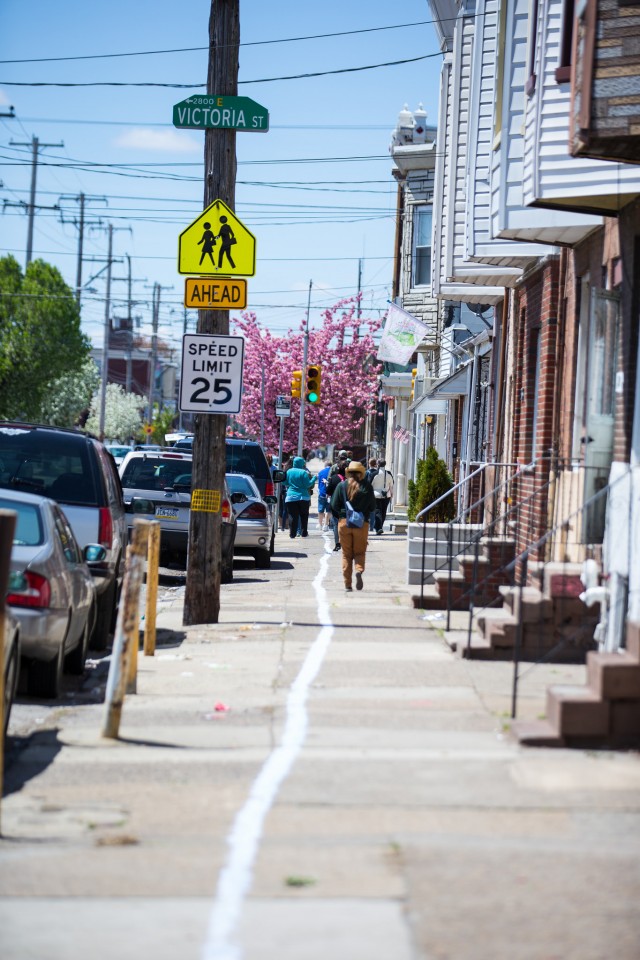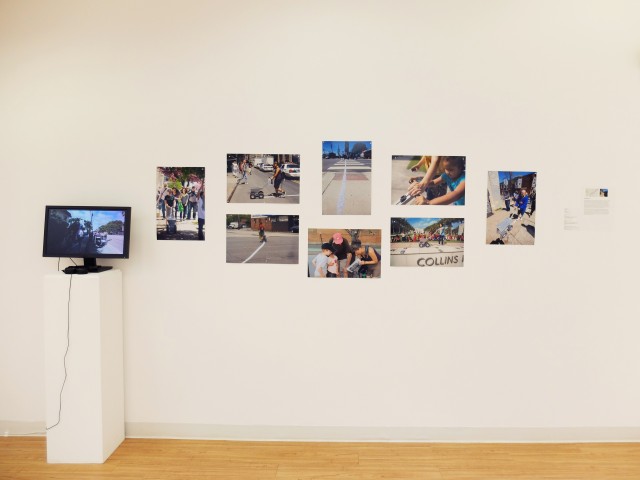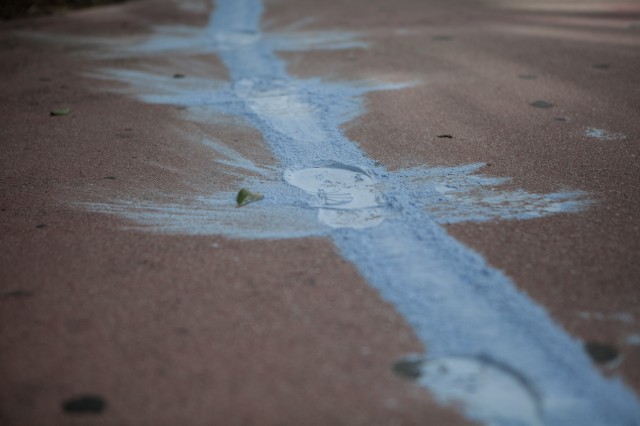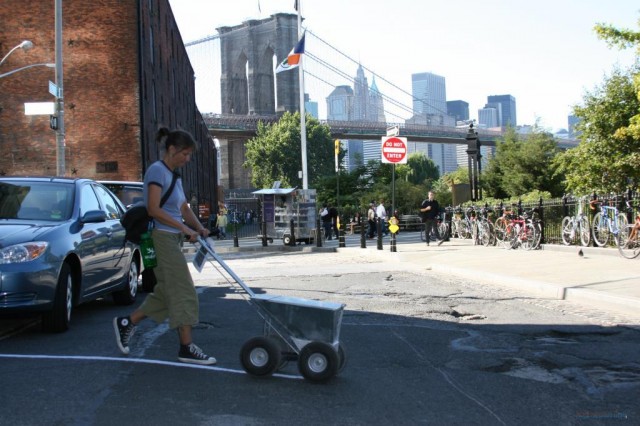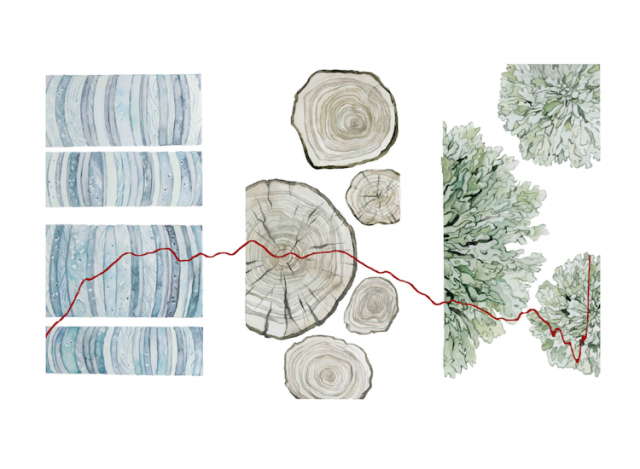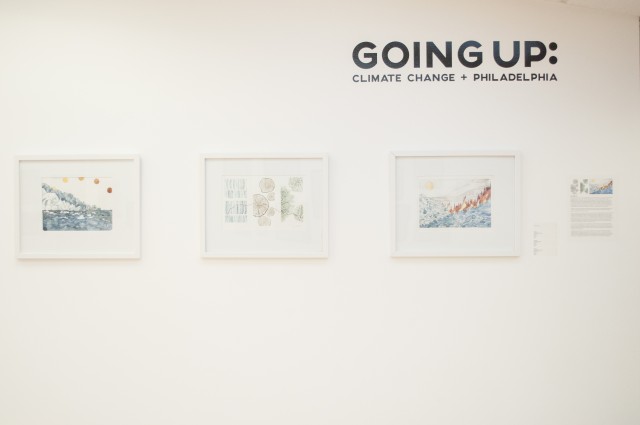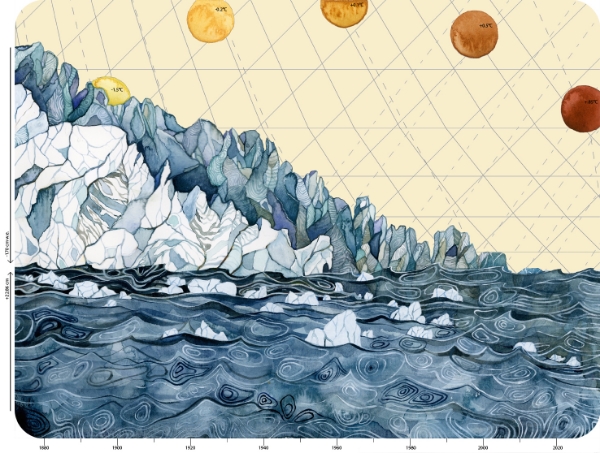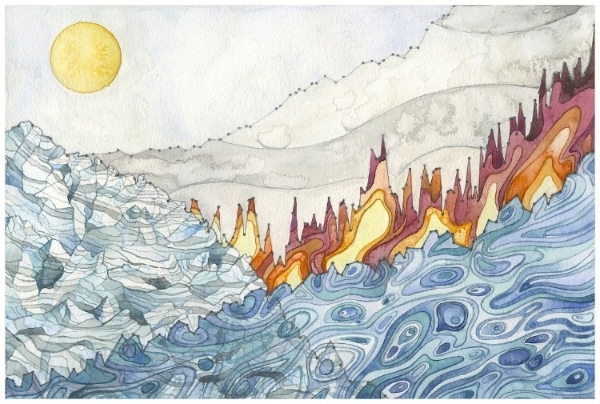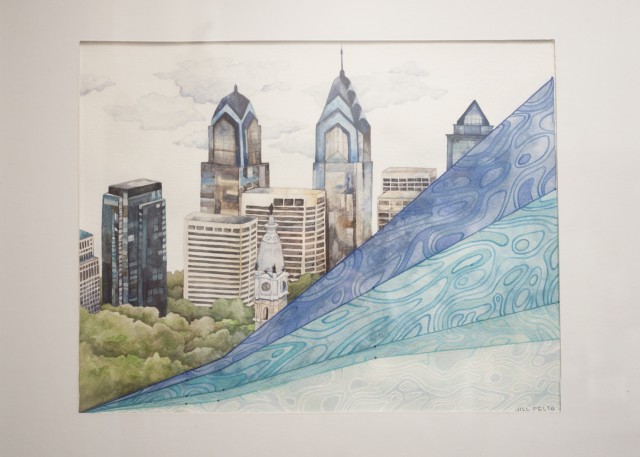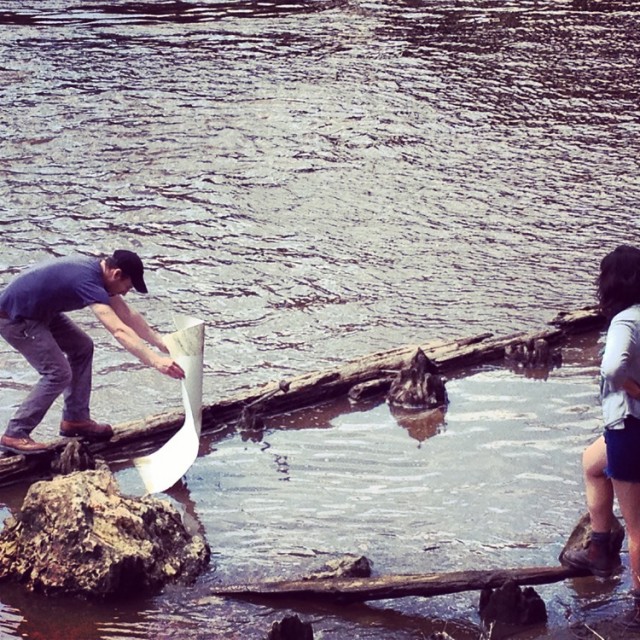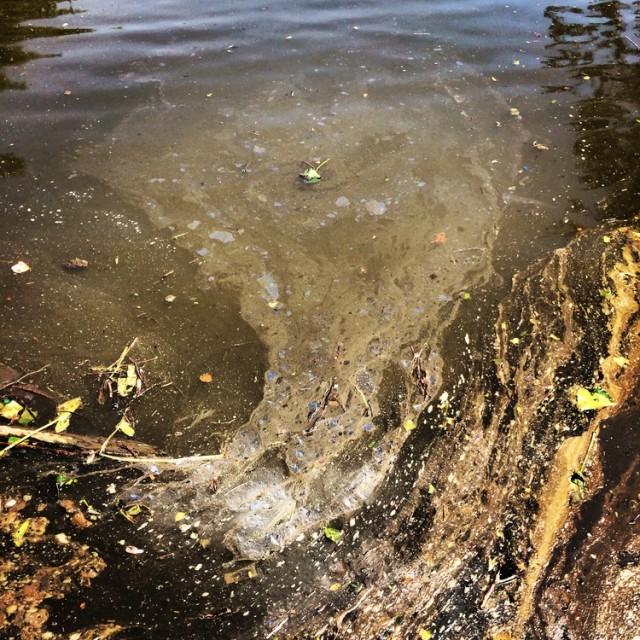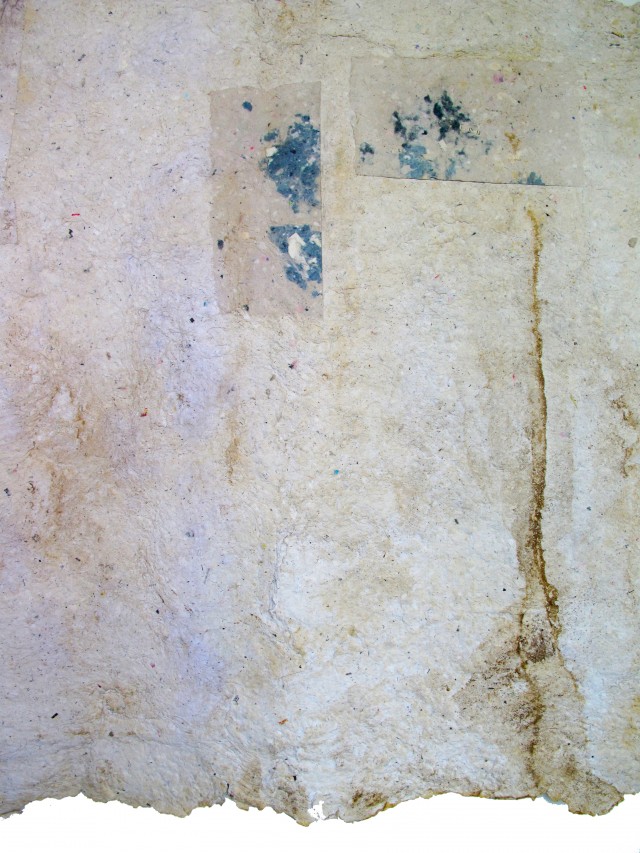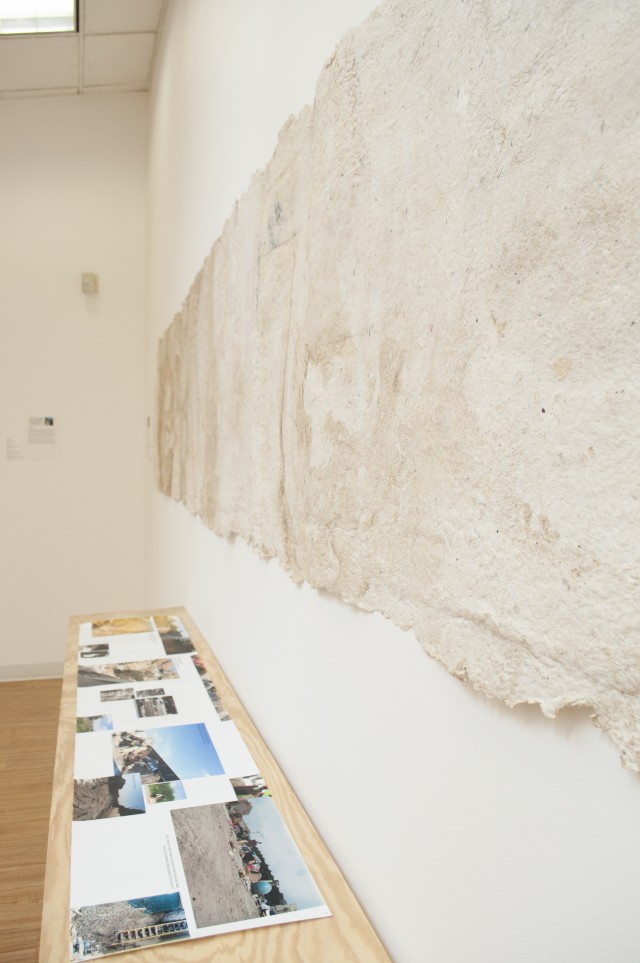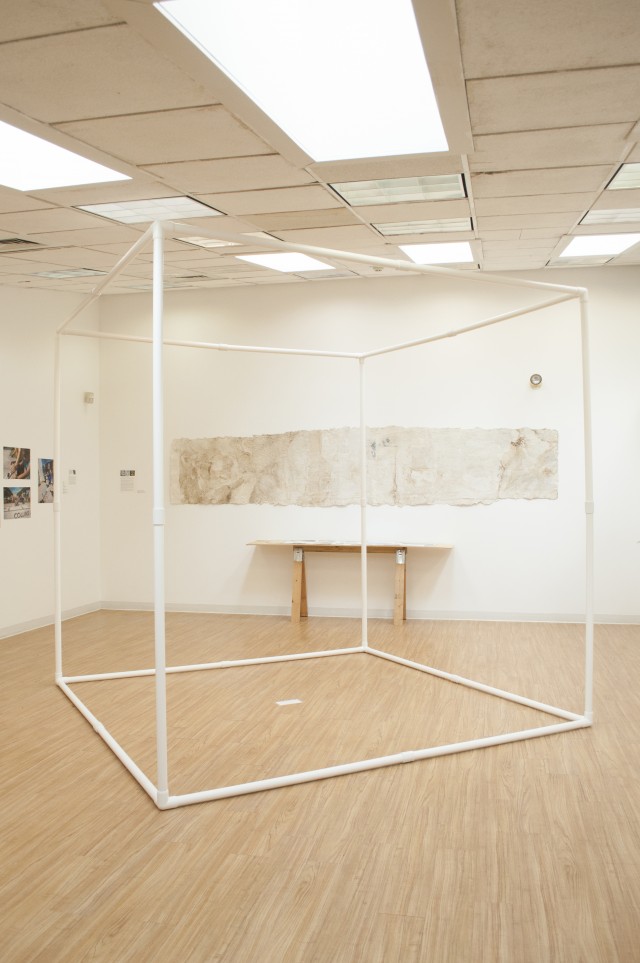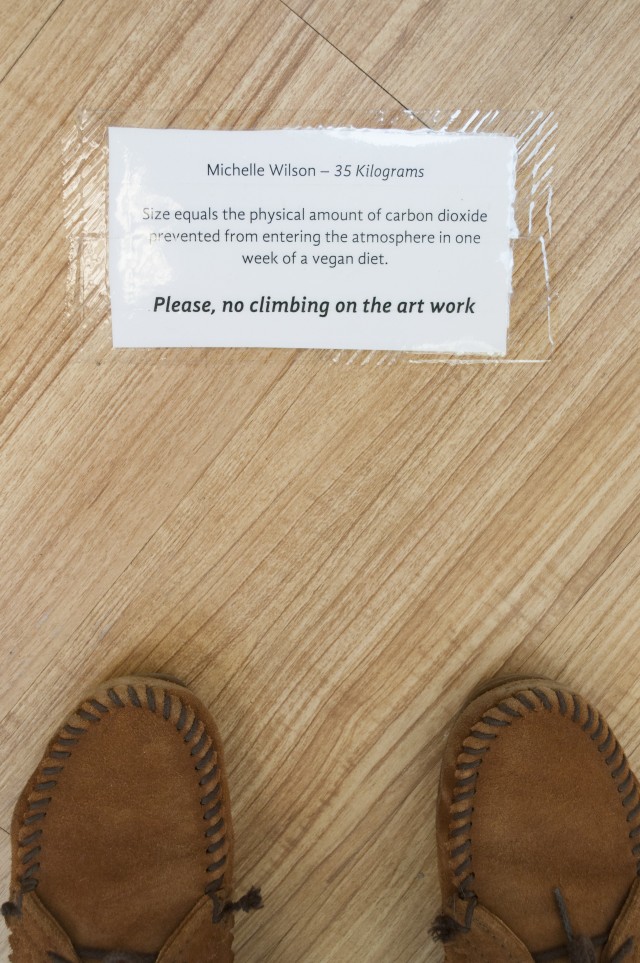Going Up: Climate Change + Philadelphia
Eight artists take on life in a warming world
Daniel Crawford, Jim Frazer, Lorrie Fredette, Eve Mosher, Jill Pelto, Kaitlin Pomerantz and John Heron, and Michelle Wilson
September 24 – December 15, 2016
Opening Reception – September 24th, 4 – 6 pm.
Though unquestionably one of the most pressing issues of our time, climate change is classically difficult for us to wrap our minds around. Art about climate change has a unique potential to make these problems personal and relevant, with artists able to serve in the role of commentator, collaborator, storyteller, catalyst, and more. Drawing lines between global phenomena and what happens in our own lives and communities means the difference between despair and engagement.
Eight artists explored various dimensions of the future of a hotter, wetter Philadelphia. Two artists made “river prints” dipping handmade paper into the pollution on the surface of the Delaware River; one painted exquisite watercolor landscapes, the contours following the data graphs of key climate indicators such as CO2 concentrations; another artist created paper works inspired by the tunnels built by bark beetles.
Going Up was supported in part by a grant from CUSP – the Climate & Urban Systems Partnership of the Franklin Institute.
Artists:
Daniel Crawford created a string quartet composition from climate change data that uses music to highlight the places where climate is changing most rapidly.
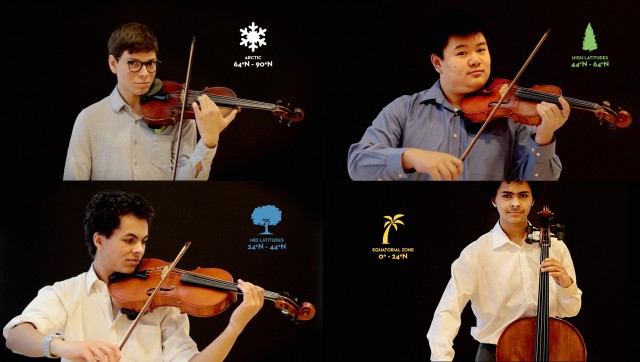
Student musicians perform Daniel Crawford’s Planetary Bands, Warming World. Photo credit: University of Minnesota
Lorrie Fredette presented a ceramic installation responding to Lyme disease, which is projected to spread as climate change increases the range of suitable tick habitat.
Fredette received her BFA in sculpture from the Herron School of Art at Indiana
University. With recent exhibitions at the Art & History Museums – Maitland, Maitland,
FL and Schema Projects, Brooklyn, NY. Additional international and US-museum
exhibitions include: University of Tennessee Knoxville (Knoxville, TN), The Hunterdon
Museum of Art (Clinton, NJ), Visual Art Center of New Jersey (Summit, NJ), Bank of
America Headquarters (Charlotte, NC), Mass MoCA (North Adams, MA), Cape Cod
Museum of Art (Dennis, MA) and Jyväskylä Art Museum (Jyväskylä, Finland). Fredette
recently co-curated Compendium at the Islip Art Museum, an exhibition highlighting the
overlapping influences of Science and Art, (SciArt), a 1960’s avant-garde concept
stemming from New York City.
Jim Frazer’s paper works are derived from bark beetle chewing patterns, an issue for forests which is expected to increase with a warming climate.
Jim Frazer studied painting with Fairfield Porter and photography with David Batchelder and Jerome Liebling while an undergraduate at Amherst College, after which he studied Photography with John McWilliams and Steven D. Foster while in graduate school at Georgia State University. With colleagues from Georgia State, he helped to start Nexus, a non-profit photography gallery that later became The Atlanta Contemporary Art Center. He was the first photographer to have a solo exhibit at Atlanta’s High Museum of Art, and his hand-colored photographs of Southern landscapes were widely collected and exhibited both regionally and nationally. In 1999, he moved with his family to Salt Lake City. After that move, he branched out from photography to a diverse practice that focused on mixed media works and collaborative installations. His newest work, though not appearing photographic at first glance, is nevertheless photo based, deriving from images of details taken from the natural world.
Eve Mosher’s High Water Line (in Philadelphia and other cities) engaged communities with local issues of sea level rise and flooding.
Eve Mosher is an artist, interventionist and playworker-in-training, living and working in New York City. Her works use investigations of the landscape as starting points for audience exploration of urban issues. Her public works raise issues on the environment, public/private space use, history of place, cultural and social issues and our understanding of the urban ecosystem. Her work has been profiled in international media including the The New Yorker, New York Times, ARTnews, American Scientist, L’uomo Vogue, and Le Monde. Her public and community artworks have received grants from New York State Council on the Arts and New York Department of Cultural Affairs, both through the Brooklyn Arts Council, and The City Parks Foundation. Collaborative works with Heidi Quante (Creative Catalysts) have received support from The Kresge Foundation, The Compton Foundation, The Whitman Foundation, and Invoking the Pause. She has a serious interest in urban ecologies and sustainable development.
Jill Pelto uses climate change data as a point of departure for her watercolor works to communicate scientific research visually.
I am an Artist and a Scientist; I am 23 and graduated from the University of Maine in December 2015 with a double major in Studio Art and Earth Science. I have always loved nature and want to use my creative skills to communicate information about extreme environmental issues with a broad audience. I have assisted with research on the mountain glaciers of Washington and British Columbia, in the Dry Valleys of Antarctica, and over the rolling hills and carved cirques of the Falkland Islands. I create artwork about both the research I have been involved with as well as a myriad of other important topics. I believe that art is a uniquely articulate lens: through it I can address environmental concerns to raise awareness and inspire people to take action. I think that art is so powerful because of the importance of the visual, many people respond more to this than to the writing in a scientific paper. My art can show the essential information of an environmental issue, but is also expressive through its beauty and its story. My hope is that this combination of intellectual and emotional content will be meaningful to a lot of people.
Kaitlin Pomerantz & John Heron created handmade paper from found fibers, printed onto with the scum of a polluted estuary along the Delaware River.
Kaitlin Pomerantz (b. 1986, New York City) is a multidisciplinary artist exploring place, time, history, landscape and land use, and the relationship between humans and nature(s). Pomerantz creates studio and site-based work, teaches, and co-facilitates the pop-up botanical arts project WE THE WEEDS. Pomerantz holds a bachelor’s degree in Art History from the University of Chicago, a post-baccalaureate certificate in Painting from the Pennsylvania Academy of Fine Arts, and recently received her MFA in Interdisciplinary Art and Landscape Studies from the University of Pennsylvania. Pomerantz has recently exhibited work at Little Berlin (Philadelphia), Elizabeth Holden Gallery (Asheville), the Schuylkill Center for Environmental Education (Philadelphia), and MAMA Gallery (Los Angeles). Pomerantz was selected to create a temporary monument to the City of Philadelphia along with artists Zoe Strauss, Alexander Rosenberg, Kara Crombie and Ai Wei Wei, as part of the city-wide festival Monument Lab (curated by Will Brown, Paul Farber and Ken Lum), coming to Philadelphia next fall.
John Heron (b. 1977, Philadelphia, PA) is an artist based in Philadelphia. Through the creation of architectural models, video installations, sculpture and works on paper, Heron’s work explores and reimagines geological phenomena and the relationship between built and natural forces. Heron has shown work at Fleisher Ollman Gallery, Vox Populi, CR Ettinger Gallery, and more; has completed public art projects for Annmarie Sculpture Garden (Maryland) and Design Philadelphia; and has recently completed residencies at RAIR Philadelphia and Nes Iceland. He is currently engaged in Due South, a collaborative exchange between artists from Sicily and the United States.
Michelle Wilson’s Carbon Corpus project explored the implications of individual food choices for global climate change.
Michelle Wilson is a papermaker, printmaker, book and installation artist. She is also one-half of the ongoing collaborative, political art team BOOK BOMBS. She has exhibited her work both internationally and in the United States, including participation in biennials such as Philadelphia’s Philagrafika 2010 and the 2006 Second International Biennial for the Artist’s Book in Alexandria, Egypt.
Her artworks are in various collections, including Yale University (New Haven, CT), the National Museum of Women in the Arts (Washington, DC), and the Mediatheque Andre Malraux (Strasbourg, France). She is a past Artist-in-Residence at the David and Julia White Colony in Ciudad Colon, Costa Rica, the Jentel Artist Residency Program, in Banner, Wyoming, and the San Francisco Center for the Book. Grants she has received include a Puffin Foundation Grant, a Pennsylvania Council on the Arts Project Streaming Grant, and an Artist-Investigator Grant from San Francisco’s Triangle Arts Lab. In 2007, she was awarded the Lenore Adelman Award for Book Arts. Creative Capital designated her as an “On Our Radar” artist in 2015.
In addition, she is a past hand-papermaking advisor to Signa-Haiti, a non-governmental organization developing a sustainable and bio-dynamic economy in Haiti. Wilson’s imprint is Rocinante Press. A former longtime resident of Philadelphia, Wilson now lives and works in the San Francisco Bay Area.
Exhibition Statement
Though one of the most pressing issues of our time, climate change is classically difficult for us to wrap our minds around. Mounting evidence shows that our brains are simply not wired for this kind of abstraction – we respond subconsciously, based on emotion, not data. Art has a unique potential to make these problems personal and relevant, activating our imaginations, catalyzing mindshifts, motivating change and action.
In Going Up, eight artists from around the United States explore a hotter, wetter Philadelphia, the future predicted by localized climate change projections. Several of the artists use data as a point of departure. Others suggest imaginative ways of thinking about problems and solutions, even considering the responsibility of art to reduce its own carbon footprint. The gallery contains artwork made for indoor display as well as pieces that document social practice or conceptual art that happened outside the gallery or studio, less focused on the product than the process. Many help us to notice our surroundings more closely, observing the small and incremental changes around us that track global change.
Dichotomies of scale pervade the gallery space. The colors and forms of the works, though, have a quietness and subtlety to them. In this way they are analogous to climate change itself: massive in scale but local in effect; happening gradually yet creeping up on us; a dominant presence, yet allowing us to move through and around it without making much of a change to the path we are on, at least for the present.
The show’s title references this trajectory along with scientific trends which often point in a terrifying upward direction. Yet, in invoking rising movement, we also pull hope into the climate change conversation. Climate change doesn’t only present challenges and doom-and-gloom scenarios, but also opportunities for innovative solutions, cooperation on an unprecedented scale, perhaps even a more sustainable and equitable society. These eight artists turn our focus both inward, toward the impacts in our own lives and communities, and upward, toward what we can do about them.
In 2014, Zadie Smith wrote on climate change that, “In the end, the only thing that could create the necessary traction in our minds was the intimate loss of the things we loved.” Art can be an anchor for this traction. Though art about climate change often contains elements of loss, the end result somehow feels more optimistic. Smith continues, “I found my mind finally beginning to turn from the elegiac what have we done to the practical what can we do.” Artists today have the unique potential to help more minds make this same, critical turn.
Together, the artists in Going Up have created a new avenue into the tangled knot of climate change. Instead of bombarding us with data, the information is transformed into beauty, into innovative communications and evocative images that stand in their own right as works of art, but which also invite the visitor to understand our warming world in new, personal ways.

